As LUMINEQ® in-glass transparent displays are made available, you can break the design boundaries of conventional vehicles by turning any glass such as windshields, side windows, sun-roofs, and doors into interactive see-through displays. With crystal transparency and 360-degree viewing angles, transparent displays bridge the gap between the digital and the physical worlds.
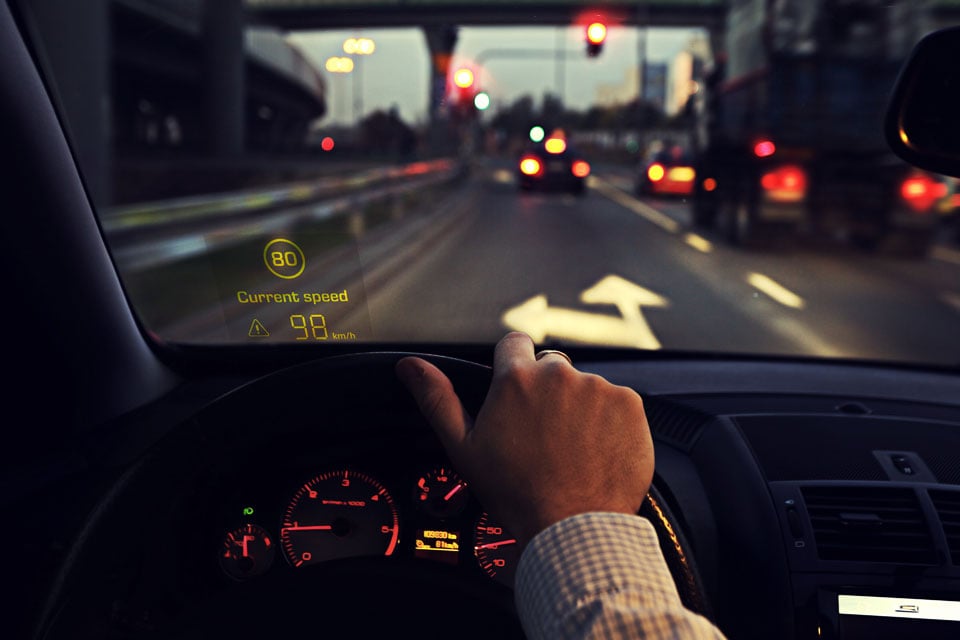
In-glass speed warning signs
Displaying critical information inside a windshield via a HUD, in the line of sight, is a major safety improvement for vehicle operators, who need to see critical information at a glance.
A typical HUD uses a projector system to project the information to the windshield in front of the driver. It contains three primary components: a projector, a combiner, and a video generation computer. While this complicated setup works, it occupies valuable space in the car and has a strict requirement for the projection angle.
As technology advances, a simpler solution is made available. By laminating a thin-film transparent display in glass, the information can be shown directly on the windshield without any extra setups. It saves space and may also bring the cost down.
The transparency of LUMINEQ in-glass displays is over 70%, which meets the automotive industry requirement. They are practically invisible and won't block the view when they are not used.
As an autonomous vehicle approaches, it can be difficult to know if it is slowing to allow a pedestrian to cross should the person step into the road.
With a safety message like ‘Safe to cross’ (visible to the pedestrian) flashing across the windscreen or side windows, pedestrians can step into the road without endangering their lives.
This is especially important when eye-contact with the driver is limited or non-existent and will be crucial when the autonomous era arrives.
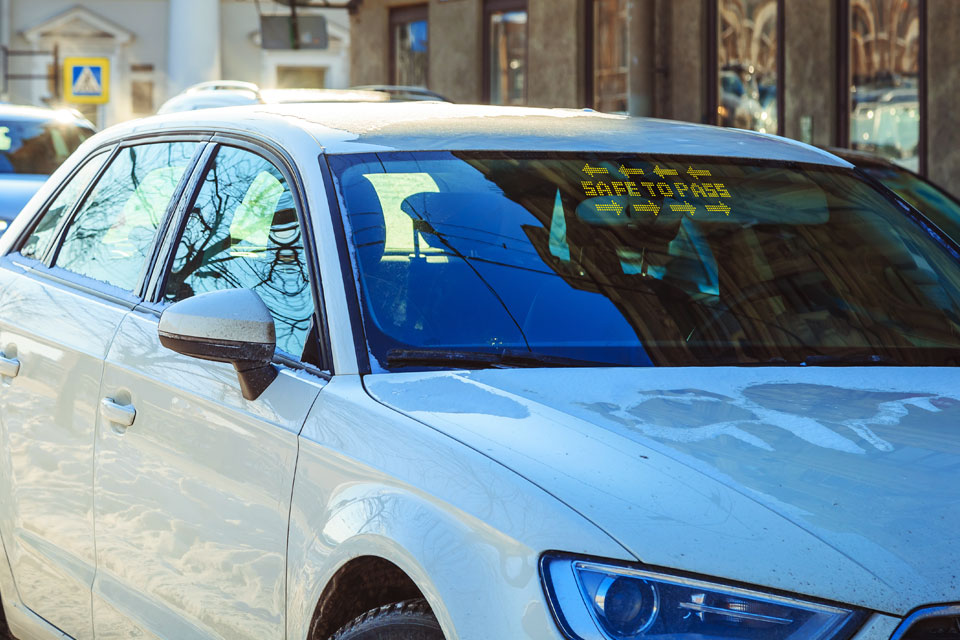
Messages to pedestrians on windshields
Smart windows become especially useful when the era of shared economy is arriving. Looking for your ordered shared car among hundreds of cars in the parking slot can be frustrating. To check the color and plate number of the car? Or what if your name appears brightly on the car window?
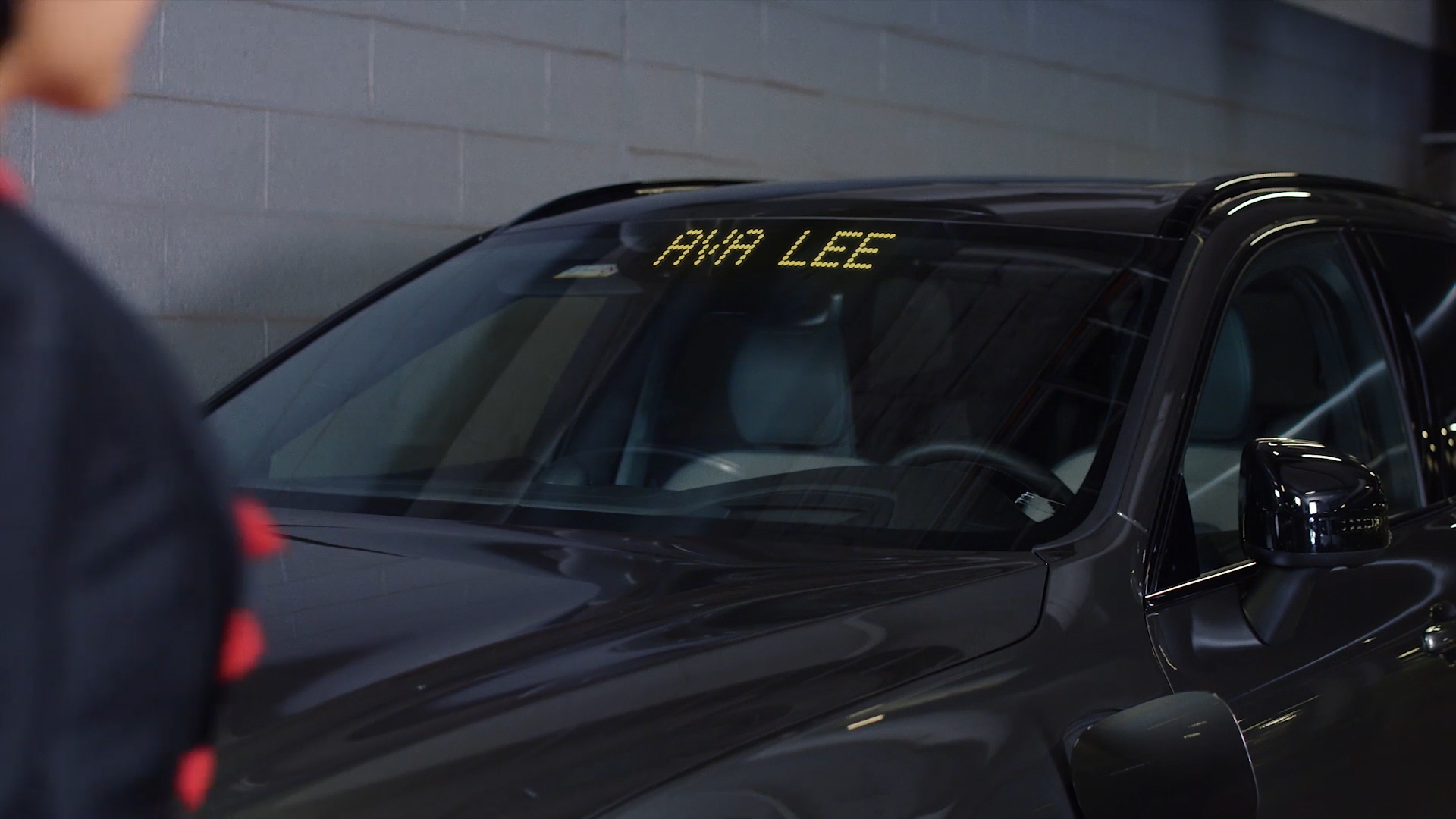
When it comes to unlocking a shared car, you probably would not want to get a physical key from somewhere first. After all, convenience is the key to the sharing economy among other benefits. Using a mobile app? But what if your phone is out of battery? Things happen.
Now with smart windows, you can simply unlock the car by typing the code directly on the window in front of you.
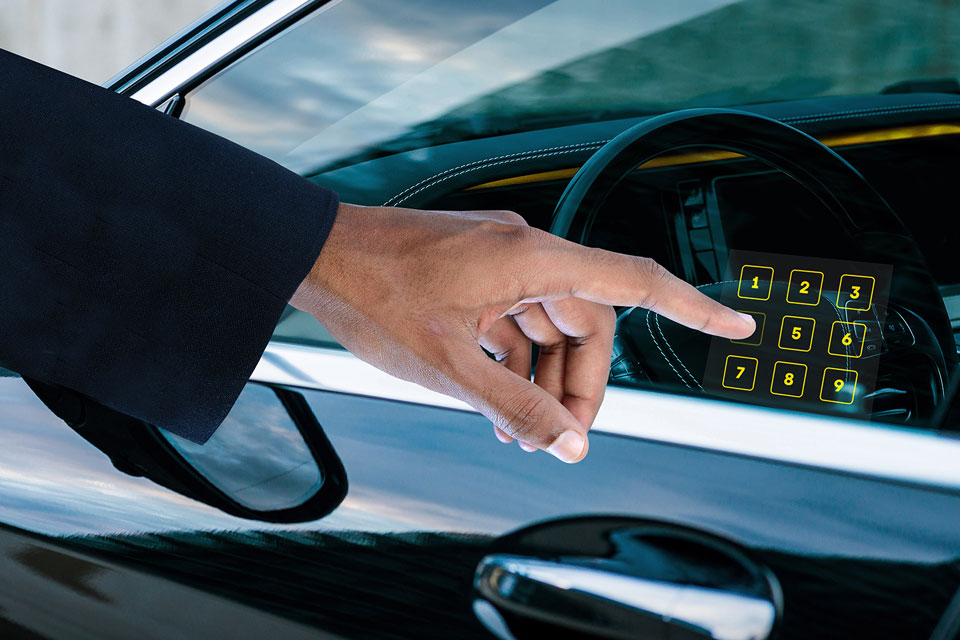
Unlock a shared car by typing the access code on car windows
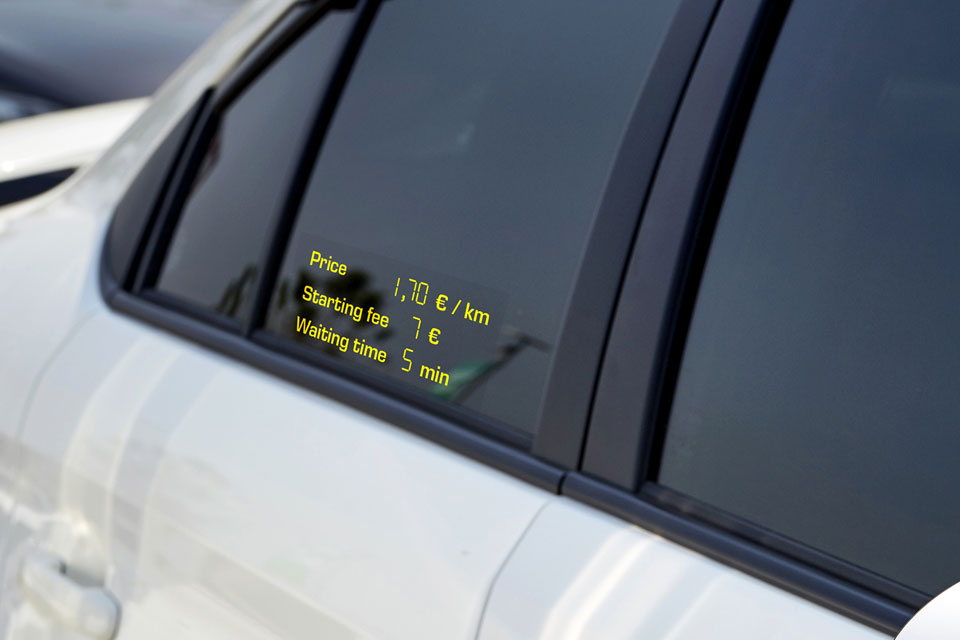
Price list available on the side window of a taxi or Uber
There are many other applications of in-glass displays for vehicles, such as displaying charging status on the side window of an electric car, controlling the roof window, dimming the side window, getting a warning notification on the side window when leaving things behind on the back seats.
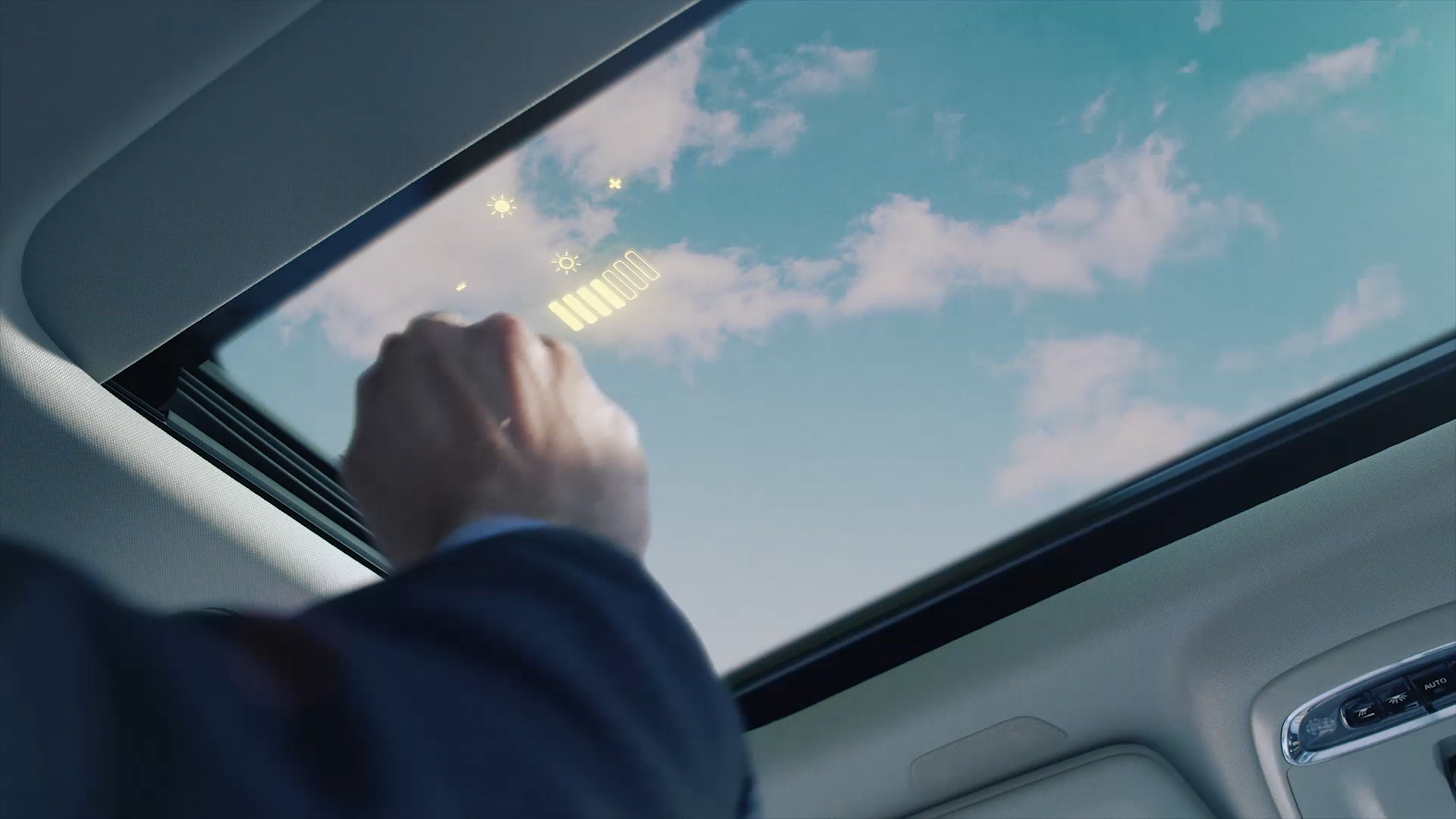
Embrace the magic of transparency and be prepared for the era of autonomous and shared economy.
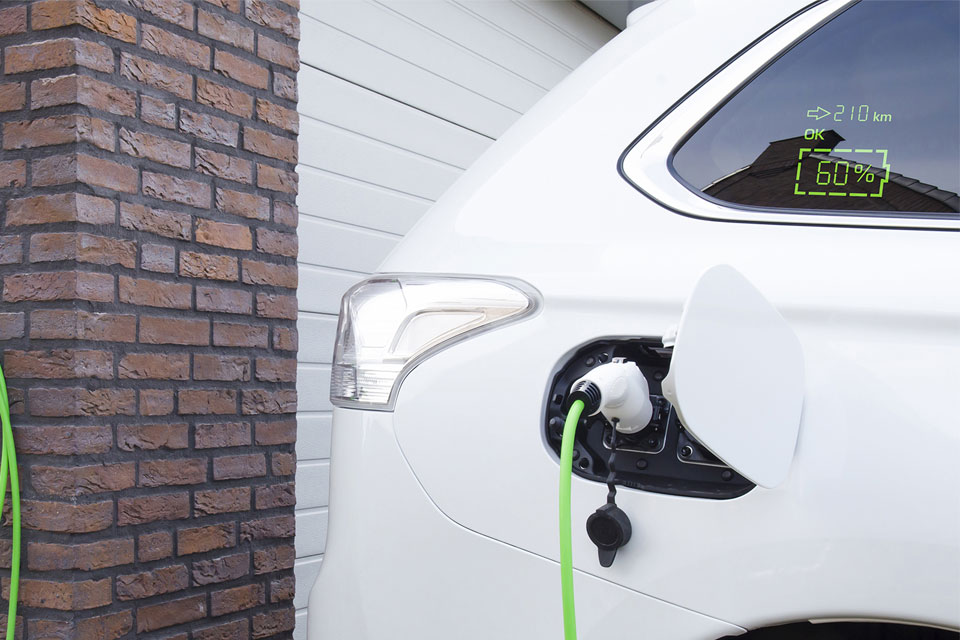
EV charging status showing on the car window
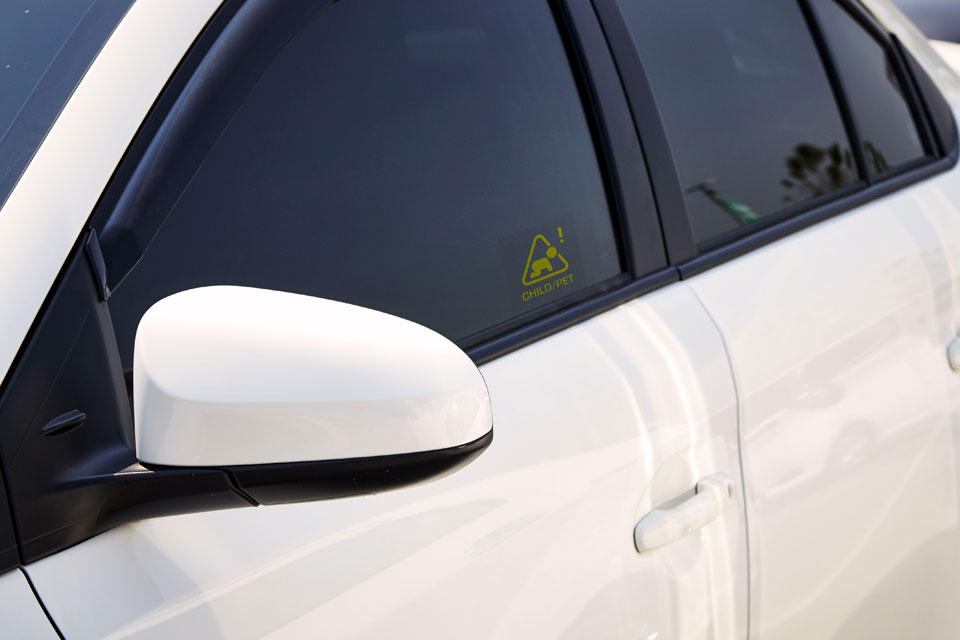
Back seat left-over warning on side windows
Subscribe to our newsletter and get updates on the latest display technologies and industry trends.